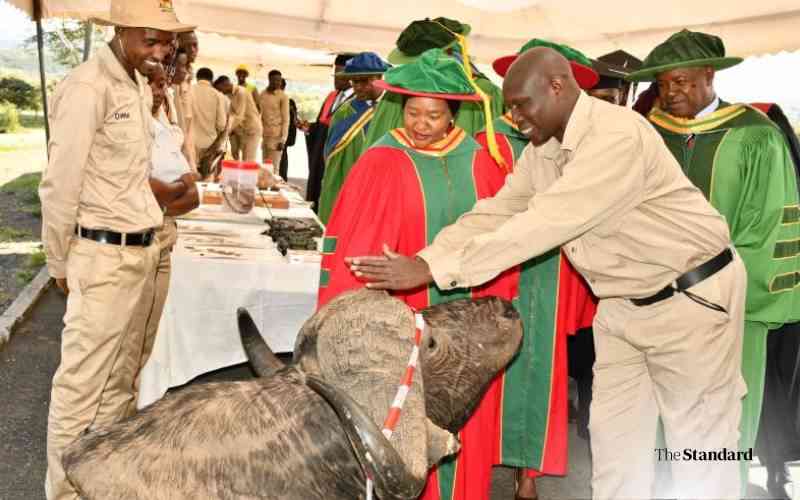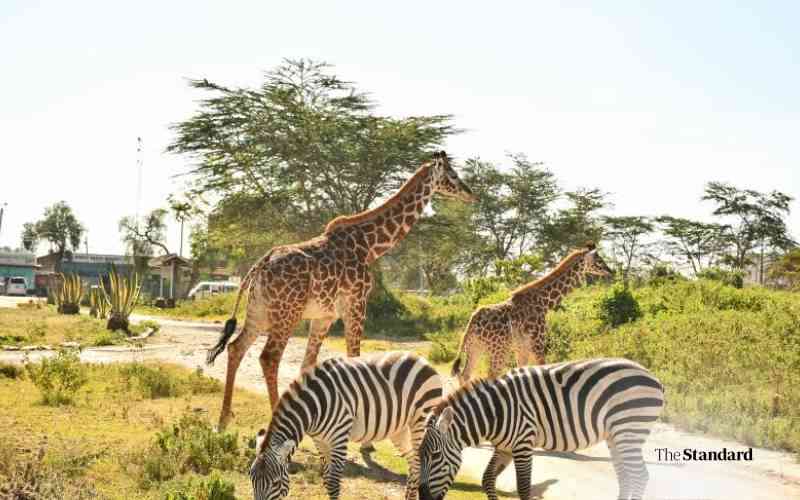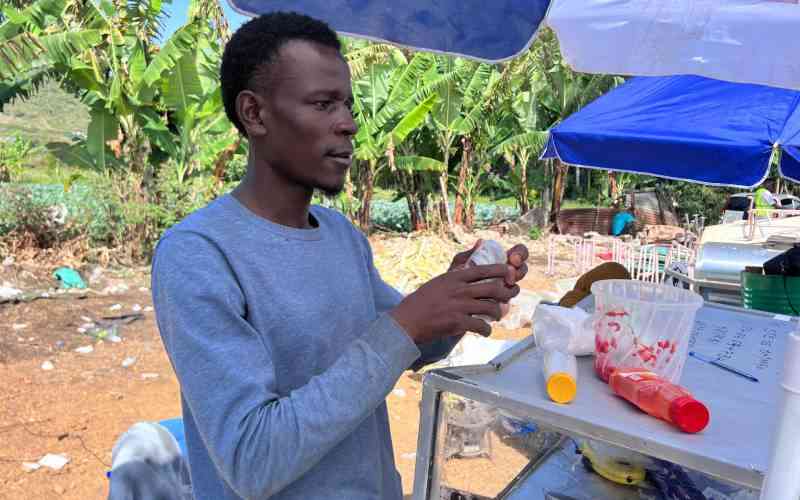
CS for Wildlife Rebecca Miano shown a stuffed wildlife species during the graduation ceremony in Wildlife Research and Training Institute in Naivasha on December 11, 2024. [Courtesy, Standard]
The Wildlife Research and Training Institute (WRTI) has embarked on the last phase of the one-year National Wildlife Census, which aims to provide data on wildlife populations, distribution, and the health of the ecosystem.
The Wajir, Garissa national wildlife census is the third phase of the exercise that is expected to end at the end of this month.
The census in the region comes at a time when the number of endangered reticulated giraffes has been on the decline, due to poaching and harsh weather conditions.
According to the Principal Scientist at WRTI, Bernard Ngoru, the survey marked a significant step in enhancing wildlife conservation efforts in Northern Kenya.
Ngoru noted that the multi-agency initiative sought to generate accurate and up-to-date data on wildlife populations, habitat conditions, and land use patterns within the two counties.
“The information gathered will be critical in understanding trends in wildlife distribution, the impact of human activities, and environmental changes in the region,” he said.
The scientist added that during the 2021 National Wildlife Census, Wajir County recorded approximately 6,120 reticulated giraffes, while Garissa County recorded 4,830.
“This endangered species of giraffe, known for its distinctive coat pattern, faces a myriad of challenges, both intrinsic and extrinsic, and there is a need to conserve them,” he added.
He said that the Naivasha-based research institute was working with other government agencies like KWS, Kenya Forest Service (KFS), and the Department of Resource Survey and Remote Sensing (DRSRS) so as to make the census a success.

A pack of wildlife feed near Karagita estate in Naivasha, along the Moi South Lake Road on January 19, 2025. [Anthony Gitonga, Standard]
“The findings will be instrumental in guiding the national and county governments and organizations in making informed decisions on land use, wildlife protection, and conflict mitigation,” he said.
On his part, WRTI Director Dr Patrick Omondi said that the first phase covered Narok -Maasai Mara, Amboseli-Magadi, Athi-Kapiti, and Ruma National Park.
Other areas that the census covered included Nakuru-Naivasha ranches, Lake Nakuru National Park, Mwea National Reserve, and Solio conservancy.
Stay informed. Subscribe to our newsletter
“The second phase started with Laikipia-Isiolo-Samburu- Marsabit-Meru landscapes, the Tsavo ecosystem, then ended with Nasalop- South Turkana – Kerio Valley ecosystem,” he said.
According to Omondi, the census, which started in July 2024, was meant to establish the current status of wildlife populations, trends, and their distribution across the country.
“The census will provide invaluable data that will inform evidence-based decision making, conservation strategies, policy-making, and contribute to sustainable management practices,” he said.







